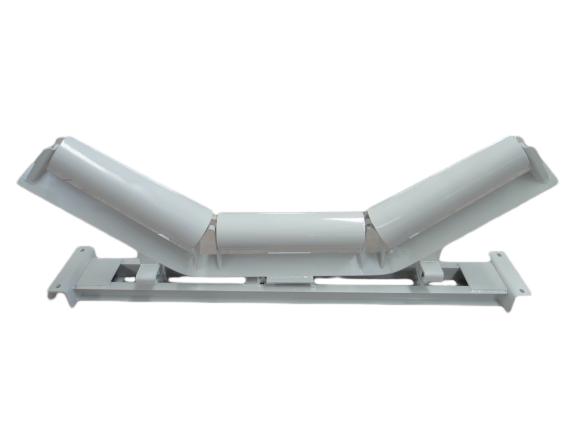 Afrikaans
Afrikaans  Albanian
Albanian  Amharic
Amharic  Arabic
Arabic  Armenian
Armenian  Azerbaijani
Azerbaijani  Basque
Basque  Belarusian
Belarusian  Bengali
Bengali  Bosnian
Bosnian  Bulgarian
Bulgarian  Catalan
Catalan  Cebuano
Cebuano  Corsican
Corsican  Croatian
Croatian  Czech
Czech  Danish
Danish  Dutch
Dutch  English
English  Esperanto
Esperanto  Estonian
Estonian  Finnish
Finnish  French
French  Frisian
Frisian  Galician
Galician  Georgian
Georgian  German
German  Greek
Greek  Gujarati
Gujarati  Haitian Creole
Haitian Creole  hausa
hausa  hawaiian
hawaiian  Hebrew
Hebrew  Hindi
Hindi  Miao
Miao  Hungarian
Hungarian  Icelandic
Icelandic  igbo
igbo  Indonesian
Indonesian  irish
irish  Italian
Italian  Japanese
Japanese  Javanese
Javanese  Kannada
Kannada  kazakh
kazakh  Khmer
Khmer  Rwandese
Rwandese  Korean
Korean  Kurdish
Kurdish  Kyrgyz
Kyrgyz  Lao
Lao  Latin
Latin  Latvian
Latvian  Lithuanian
Lithuanian  Luxembourgish
Luxembourgish  Macedonian
Macedonian  Malgashi
Malgashi  Malay
Malay  Malayalam
Malayalam  Maltese
Maltese  Maori
Maori  Marathi
Marathi  Mongolian
Mongolian  Myanmar
Myanmar  Nepali
Nepali  Norwegian
Norwegian  Norwegian
Norwegian  Occitan
Occitan  Pashto
Pashto  Persian
Persian  Polish
Polish  Portuguese
Portuguese  Punjabi
Punjabi  Romanian
Romanian  Russian
Russian  Samoan
Samoan  Scottish Gaelic
Scottish Gaelic  Serbian
Serbian  Sesotho
Sesotho  Shona
Shona  Sindhi
Sindhi  Sinhala
Sinhala  Slovak
Slovak  Slovenian
Slovenian  Somali
Somali  Spanish
Spanish  Sundanese
Sundanese  Swahili
Swahili  Swedish
Swedish  Tagalog
Tagalog  Tajik
Tajik  Tamil
Tamil  Tatar
Tatar  Telugu
Telugu  Thai
Thai  Turkish
Turkish  Turkmen
Turkmen  Ukrainian
Ukrainian  Urdu
Urdu  Uighur
Uighur  Uzbek
Uzbek  Vietnamese
Vietnamese  Welsh
Welsh  Bantu
Bantu  Yiddish
Yiddish  Yoruba
Yoruba  Zulu
Zulu Exploring Different Types of Roller Systems for Belt Conveyor Applications and Their Benefits
Understanding the Different Types of Belt Conveyor Rollers
Belt conveyor systems are integral to many industries, providing an efficient means of transporting materials from one point to another. At the heart of these systems are conveyor rollers, which play a crucial role in supporting the belt and ensuring smooth operation. This article will delve into the various types of belt conveyor rollers, highlighting their functions, designs, and applications.
1. Crowned Rollers
Crowned rollers are designed with a slight arc or crown on their surface, which helps to keep the belt centered during operation. This design feature is particularly beneficial in preventing belt misalignment, which can lead to increased wear and tear on both the belt and the roller. Crowned rollers are commonly used in applications where the conveyor has a complex path, including curves and inclines. They are particularly effective in maintaining proper belt tracking in industries such as mining, manufacturing, and logistics.
2. Flat Rollers
Flat rollers, as the name suggests, have a straight cylindrical surface. These rollers are primarily used in the flat sections of conveyor belts, where precise control of the belt's position is not as critical. Flat rollers are straightforward in design and are widely employed in a variety of applications, including packaging, warehousing, and material handling. Although they do not provide the same tracking advantages as crowned rollers, flat rollers are essential for supporting the weight of the moving belt and its load.
belt conveyor roller types

In applications where heavy loads are transported, impact rollers are vital. These rollers are designed to withstand the force of materials being loaded onto the conveyor system. Impact rollers typically feature a robust construction and may include additional cushioning to absorb the energy from falling materials. They are commonly used in mining and bulk material handling operations where materials can be heavy and abrasive. Ensuring that a conveyor system is equipped with appropriate impact rollers can significantly reduce damage to the belt and extend the conveyor's service life.
4. Return Rollers
Return rollers are essential components of belt conveyors, serving to support the return side of the belt after it has discharged its load. These rollers typically have a standard flat design and are critical in preventing the belt from sagging and increasing friction. Properly functioning return rollers contribute to the overall efficiency of the conveyor system by reducing energy consumption and wear on the components. They are used in a variety of settings, from manufacturing plants to agricultural applications.
5. Self-Cleaning Rollers
Self-cleaning rollers are designed to prevent material buildup on the roller surface, which can lead to inefficiencies and operational issues. These rollers typically feature a specially designed surface that helps knock off debris and material as the conveyor operates. Self-cleaning features are especially advantageous in industries where materials tend to stick or where dust and other contaminants can accumulate. By using self-cleaning rollers, companies can reduce maintenance requirements and enhance the performance of their conveyor systems.
Conclusion
Understanding the different types of belt conveyor rollers is essential for selecting the right components for specific applications. Each type of roller—whether crowned, flat, impact, return, or self-cleaning—offers unique benefits that cater to various operational needs. By choosing the correct rollers, industries can ensure the smooth operation of their conveyor systems, improving efficiency, minimizing downtime, and extending the lifespan of the equipment. As technology continues to evolve, the design and functionality of conveyor rollers will likely advance, further enhancing productivity across multiple sectors.
-
Revolutionizing Conveyor Reliability with Advanced Rubber Lagging PulleysNewsJul.22,2025
-
Powering Precision and Durability with Expert Manufacturers of Conveyor ComponentsNewsJul.22,2025
-
Optimizing Conveyor Systems with Advanced Conveyor AccessoriesNewsJul.22,2025
-
Maximize Conveyor Efficiency with Quality Conveyor Idler PulleysNewsJul.22,2025
-
Future-Proof Your Conveyor System with High-Performance Polyurethane RollerNewsJul.22,2025
-
Driving Efficiency Forward with Quality Idlers and RollersNewsJul.22,2025





























